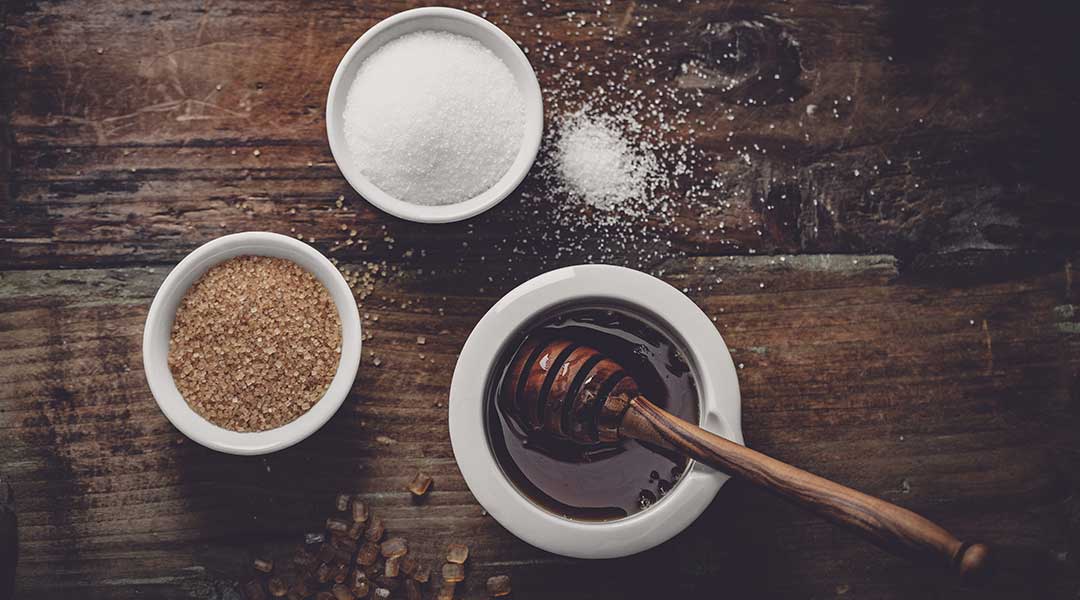Diabetes: Manuka Honey Benefits for Diabetics

Manuka honey, renowned for its numerous health benefits, has long been recognised as a natural sugar alternative. However, recent studies have revealed its potential to offer significant advantages for diabetic patients struggling with peptic stomach ulcers and foot ulcers that resist conventional treatment methods.
In this article, we delve into the intriguing world of Manuka honey and its potential benefits for gut health and wound healing for individuals with diabetes.
Potent antidiabetic affects of Manuka honey
One remarkable attribute of Manuka honey is its moderate glycemic index (GI), ranging from 54 to 59, which classifies it as a low to medium GI food[2]. This is particularly significant for individuals with diabetes, as it makes Manuka honey a better choice compared to regular sugar. Some studies have even suggested that Manuka honey could act as an antidiabetic agent[3].
Controlled studies have shown that when consumed in small doses, Manuka honey can lead to a reduction in HbA1C levels, which reflects the amount of sugar attached to red blood cells.
Another study found that both Manuka honey and pure honey can increase insulin levels by stimulating the production of C-peptides and beta cells in the pancreas, thereby helping to regulate blood glucose levels[4].

Manuka Honey Benefits for Diabetic Foot Ulcers
For individuals living with diabetes, neuropathic diabetic foot ulcers (NDFU) are a persistent and distressing challenge.
Fortunately, research has shown that Manuka honey-impregnated dressings (MHID) can be a highly effective treatment for NDFU[1]. These dressings not only accelerate the healing process but also aid in the disinfection of ulcers, reducing the risk of infection and complications.
Manuka Honey Benefits for Inflammation Reduction & Wound Healing
Manuka honey is distinguished by its unique blend of anti-inflammatory, antioxidant, and wound-healing properties. These characteristics make it particularly valuable for diabetic patients with foot ulcers[1].
However, it's important to note that the response to honey can vary from person to person. Just as individuals have different reactions to carb-rich foods, medications, and physical activity, their response to honey and its impact on their glucose levels will also vary, depending on how well they manage their symptoms and sugar levels.
You can read more about the benefits of Manuka honey for wounds and ulcers in our previous blog post, Manuka Honey Benefits For Wounds and Ulcers.
Manuka Honey Recommended Intake & Application for Diabetics
Before incorporating Manuka honey into your diet, it is advisable for diabetics to limit your intake to 1 to 2 teaspoons or less than 15 grams per day[5]. It's also a good practice to reduce the consumption of other carbohydrate-heavy foods when including honey in your diet.
In cases where oral consumption is problematic, Manuka honey can be applied topically to heal skin infections, wounds, blisters, or other ailments associated with diabetes.
Manuka Honey Comparisons to Conventional Medical Methods for Diabetic Foot Ulcers
The effectiveness of Manuka honey in healing diabetic foot ulcers has been observed to be comparable to, or in some cases even more effective than, conventional medical methods[6].
However, it is essential to consult with a diabetologist, dietitian, or healthcare professional who specialises in diabetes before incorporating Manuka honey into your dietary or topical treatment plan.
When purchasing Manuka honey, ensure that you obtain a medium to high-grade product from a trusted provider to guarantee its quality and authenticity.
Manuka honey's role in diabetes management
Manuka honey has demonstrated potential benefits for diabetic patients as a natural sugar alternative as well as dealing with peptic stomach ulcers and non-healing foot ulcers that do not respond to conventional treatment methods.
While the advantages are promising, it is crucial to exercise in moderation and seek guidance from a healthcare professional to ensure that Manuka honey is integrated safely and effectively into your diabetes management plan.
With the right approach, this natural wonder may hold the key to improving the well-being of diabetic individuals facing these challenging health issues.
Sources:
[1] https://pubmed.ncbi.nlm.nih.gov/22985336/
[2] https://www.sciencedirect.com/science/article/abs/pii/S2212826312000607
[3] https://www.ncbi.nlm.nih.gov/pmc/articles/PMC3399220/
[4] https://www.ncbi.nlm.nih.gov/pmc/articles/PMC5424551/
[5] https://www.ncbi.nlm.nih.gov/pmc/articles/PMC5817209/
[6] https://www.sciencedirect.com/science/article/abs/pii/S0965206X23000359
Disclaimer: Statements made have not been evaluated by the TGA (Australian Therapeutic Goods Administration) or FDA (U.S. Food & Drug Administration). Products sold are not intended to diagnose, treat, cure, or prevent any disease. Manuka honey is not intended to be a substitute for other medicines or advice and is best used in conjunction with any existing treatment plans. Please consult your healthcare professional before beginning any treatment. For all of the science-backed and evidence-based information on the natural healing properties of medicinal-grade Manuka honey, please refer to the latest published Manuka Honey research and use at your own discretion.


Leave a comment